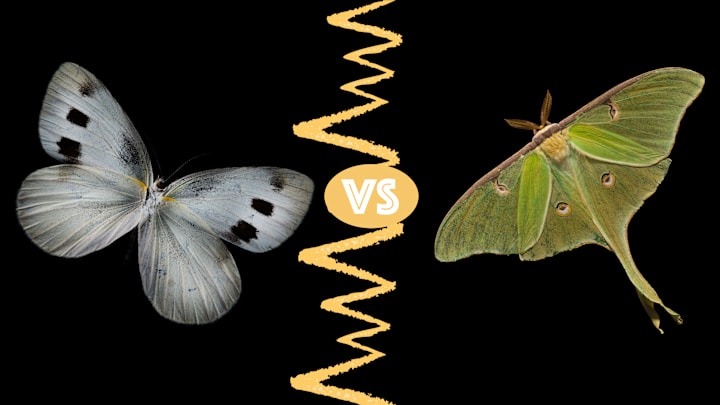Butterflies and moths have a lot in common. Both species are insects, they both start life as caterpillars, and they both sport large, lustrous wings. But there are also clear scientific differences that separate the two—and you don’t need to be an entomologist to recognize them.
How to Tell the Difference Between Butterflies and Moths
Moths and butterflies look and behave so similarly because they comprise the same order of insects. Organisms in the order Lepidoptera are defined by their scaled wings and the straw-like mouthparts they use to sip fluids. They are born as larvae with segmented bodies and chewing mouthparts and undergo metamorphosis to reach their mature forms.
When a Lepidoptera caterpillar has entered its pupa stage, it will emerge as a creature that falls under one of two umbrellas: moth or butterfly. Moths can generally be recognized by their antennae. Unlike butterflies, which have long, skinny antennae that get wider at the tips, moth antennae have rows of hair-like bristles like feathers.
If you can’t see the antennae of the insect you’re looking at, check its wings. The wings of moths and butterflies bear some key differences, though they’re both large and shiny. Moth wings have a structure that butterflies lack called a frenulum, which connects the front and back sections of the wings together. When butterflies close their wings, they bring them together above their backs like the pages of a book, and when moths close them, they fold them straight back like a paper fan. Color can be a distinguishing factor—butterflies like monarchs and swallowtails have brightly colored wings, while moths tend to be colored with duller shades like browns and creams—but that doesn’t always confirm whether a creature is a moth or a butterfly. Some moth species, like the luna and rosy maple moth, display strikingly vibrant color patterns.
Their differences don’t end with appearances. The time of day these animals can be seen out and about indicates which type of lepidopteran they are. While most butterflies are diurnal, meaning they’re active during the day, moths tend to be nocturnal. Without bright sunlight to fly by, moths evolved to use the moon to navigate, which is why the insects are attracted to bright light sources like porch lights and campfires.
In summary: If you can’t tell if the thing flapping its wings in front of you is a moth or butterfly, check its wings, antennae, and the time of day. And if you want to know if it’s a bug, an insect, or both, there’s an entirely different elimination process you need to go through.
Butterflies vs. Moths Cheat Sheet
Insect | Wings | Antennae | Time of Day When Active |
|---|---|---|---|
Butterflies | Close wings together above their backs | Long and skinny; get wider at the tip | Diurnal |
Moths | Close wings straight back | Contain rows of hair-like bristles | Nocturnal |
Learn About the Differences Between More Animals Here:
A version of this story originally ran in 2019; it has been updated for 2024.
